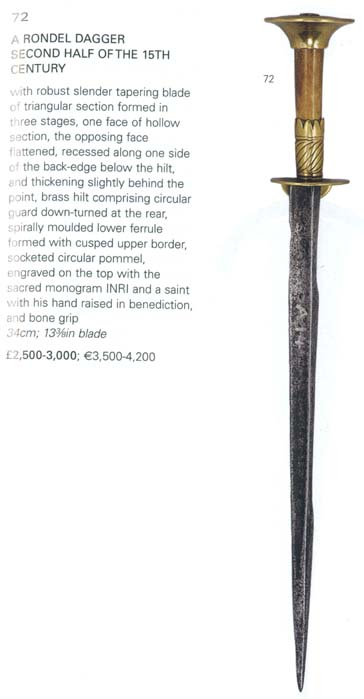I pretty easily found two rondel daggers that use brass (sometimes called latten) in their hilts. I'm sure there are more examples of various types of weapons.
So, why does brass have a bad reputation? Why is it so despised? Some of this likely comes from the use of very soft brass in cheap, poorly constructed reproductions. Our ancestors obviously used it, though. As Sean noted in the thread lined above, brass-hilted swords gave great service to many soldiers of the 18th and 19th centuries, and we have examples from earlier, like these daggers, that show brass used on what appear to have been battlefield weapons. It was used for gun barrels in plenty of cases as well. It can't have been as weak or soft as people allege, or I doubt it would be used.
Thoughts?
I'd also love to see more examples that use brass for hilt parts.

From a Sotheby's Catalogue

From the 2001 Peter Finer Catalogue
